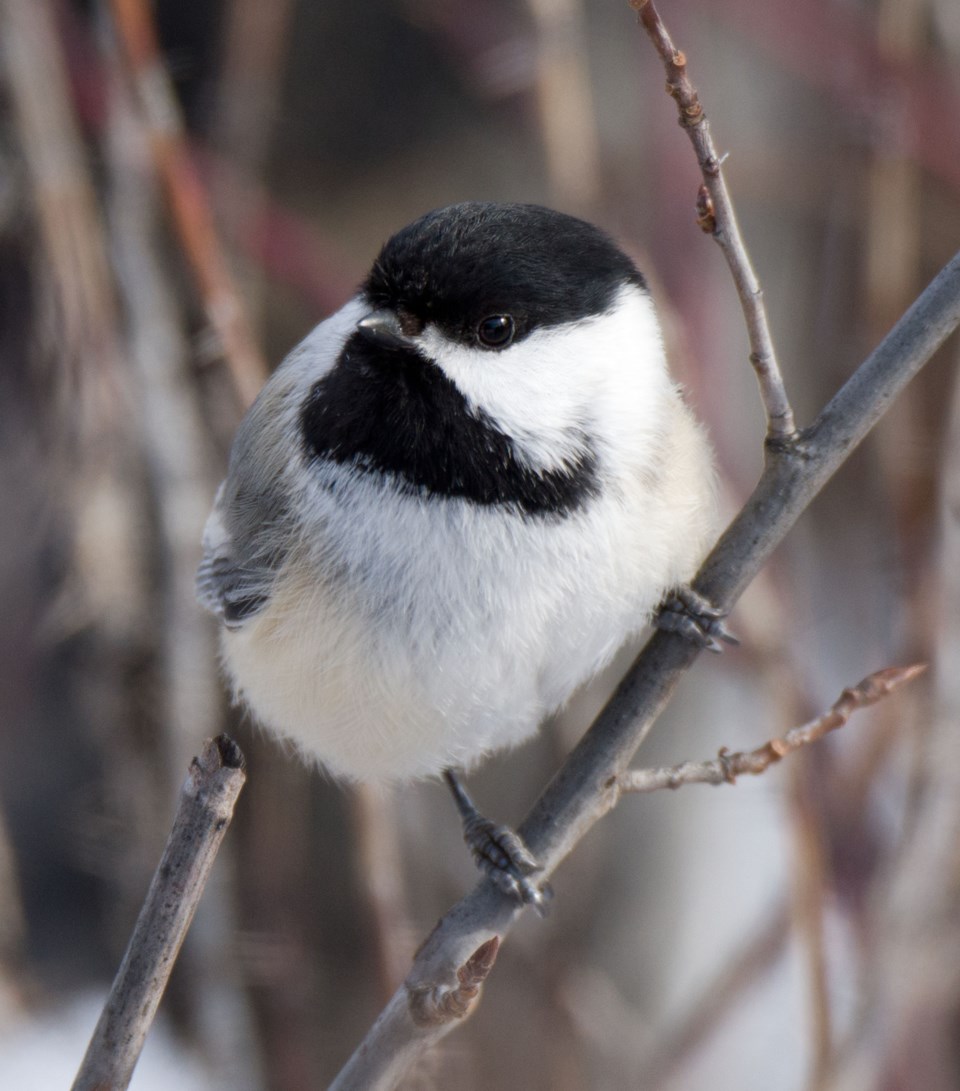New research by the University of Alberta suggests that not only can humans and chickadees understand each other’s language, they can also, to an extent, understand panda.
U of A psychology PhD candidate Jenna Congdon published a study earlier this month in the Journal of Comparative Psychology on the ability of humans and chickadees to detect arousal in the speech of other vertebrates.
Humans and black-capped chickadees are among a handful of vocal learners who learn vital verbal signals from their parents, Congdon said. (The others are songbirds, hummingbirds, parrots, bats, elephants, whales, and dolphins.)
Animals use vocal signals to broadcast information about their location, physical/emotional state, or perceived threats, and there’s plenty of evidence that some listen in on others for tips, Congdon said. Nuthatches will join chickadees when the latter issue calls to harass predators, for example, and some migratory birds will listen in on local ones to assess the quality of local habitat.
Congdon and her team wanted to see if humans and chickadees could learn to detect levels of arousal/excitement/fear in other species, which would be an advantage in the wild – if you hear another species is really upset about something, it could cue you to stay alert to a possible threat.
The team had human and chickadee test subjects listen to 180 high and low arousal sounds made by adult ravens, tree frogs, macaques, black-capped chickadees, and humans (speaking Tamil, which none of the participants spoke), as well as infant pigs, elephants, giant pandas, and alligators. Subjects were trained to either wait by a feeder for food (chickadees) or click a button (humans) if they heard what they thought was a high arousal sound and to not do so if they heard a low arousal one.
Parlez-vous panda?
The team found that humans and chickadees could correctly identify high and low arousal calls from members of their own species, each other, and giant pandas.
“The giant panda was the most interesting of the findings,” Congdon said, as it’s a species that should be totally alien to chickadees.
Acoustic analysis suggests that the secret may be in the initial fundamental frequency of these calls, Congdon said – all three species tend to make higher-pitched calls when they were excited/distressed about something.
This study suggests that humans and chickadees can learn to detect the emotional state of other species through the sounds they make, Congdon said – a trick the team suspects other vocal learners might also be able to pull. This might be a hint of some sort of universal structure behind all languages – the team would have had a stronger case if participants could correctly ID the calls of the other six species in the test.
Vocalization is an important part of communication, but we usually think of it as just happening between members of the same species, said U of A biologist Erin Bayne, who studies human-wildlife interactions but was not involved in this study, in an email.
“What this paper shows and is quite important is that different species can understand some key components of other species vocalizations and that the cues that they are using are generalizable,” he said, suggesting that different species share fundamental structures and components to their languages and can to some extent understand each other.
Congdon said she hopes to do MRI scans of people to see if there’s a neurological base to this ability to understand the languages of other animals.
Congdon’s study can be found at bit.ly/30tpPw0.




